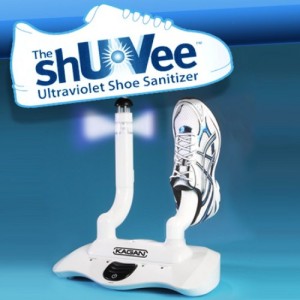Two marketers of ultraviolet light “disinfectant” devices have agreed to stop making claims that their devices can wipe out foot fungus and dangerous bacteria like MRSA, E. coli, and Salmonella in order to settle U.S. Federal Trade Commission charges alleging they engaged in false and unsubstantiated advertising.
 The settlements impose judgments of $656,423 and $629,359, against Angel Sales, Inc. and its principals and Zadro Health Solutions, Inc., respectively. Based on their ability to pay, the Angel Sales judgment is suspended and the Zadro Health Solutions’ judgment is partially suspended upon payment of $222,029 for consumer refunds. In each case, the full judgment will become due immediately if defendants are found to have misrepresented their financial condition.
The settlements impose judgments of $656,423 and $629,359, against Angel Sales, Inc. and its principals and Zadro Health Solutions, Inc., respectively. Based on their ability to pay, the Angel Sales judgment is suspended and the Zadro Health Solutions’ judgment is partially suspended upon payment of $222,029 for consumer refunds. In each case, the full judgment will become due immediately if defendants are found to have misrepresented their financial condition.
“The defendants said their devices’ UV rays would kill dangerous microorganisms, but they didn’t have scientific evidence to back that up,” said Jessica Rich, Director of the FTC’s Bureau of Consumer Protection. “I’m pleased that the FTC’s action has put an end to these deceptive claims.”



 When I think Best Western, I think free wi-fi.
When I think Best Western, I think free wi-fi.